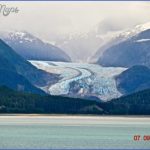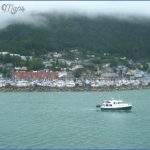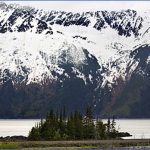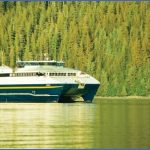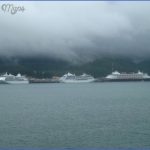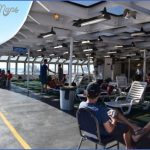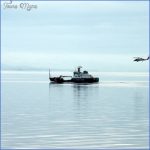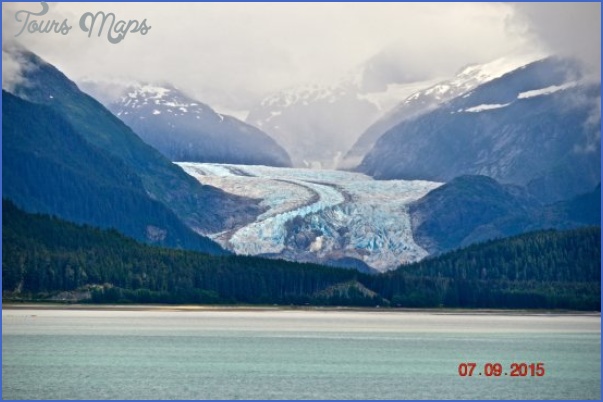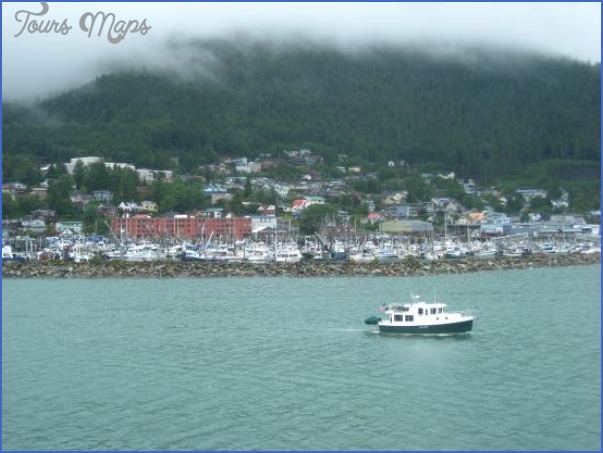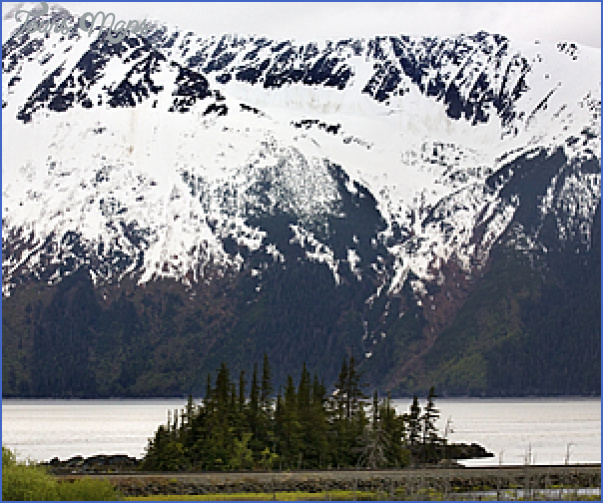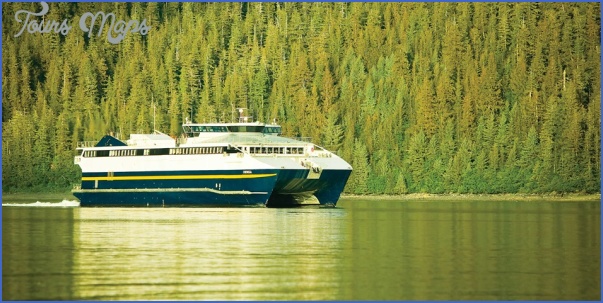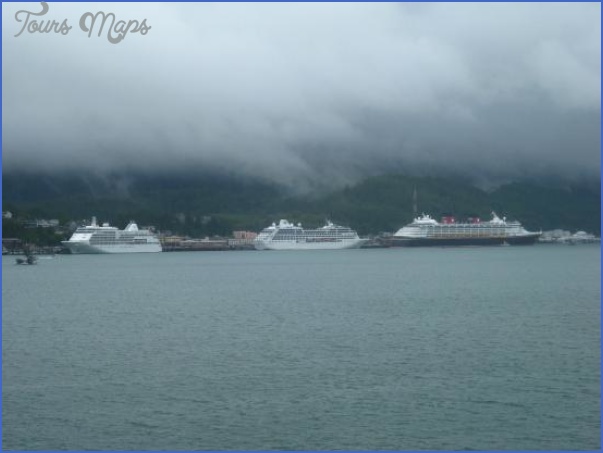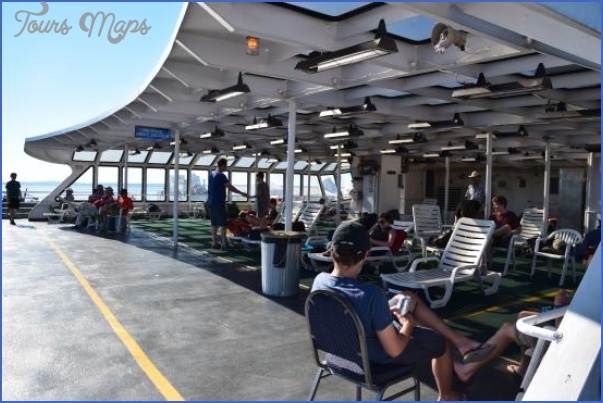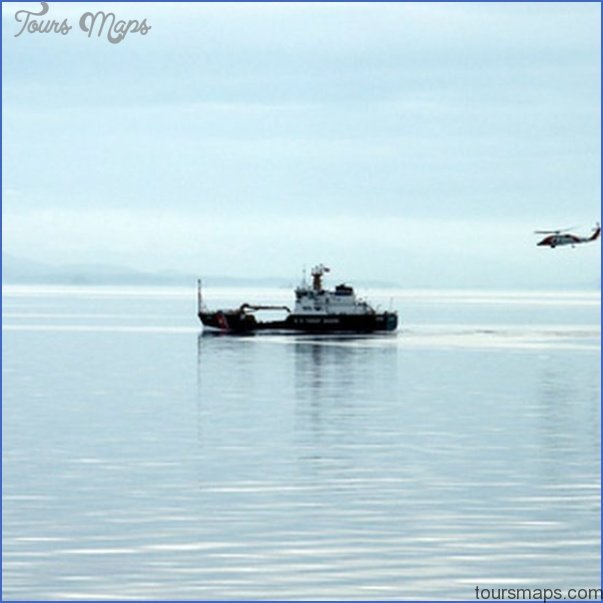In Alaska, which has fewer paved roads than virtually any other state, getting around can be a problem In fact, some cities like Juneau, the state capital are not even connected to the rest of the state by roads. There are local airlines, of course, and small private planes lots and lots of small private planes. (There are more private planes per capita in Alaska than in any other state.) But given the weather conditions for large parts of the year, airplanes are not always the most reliable way of getting from Point A to Point B.
That’s why the Alaska Marine Highway System (aka the Alaska Ferry, or AMHS) is so important. The system was originally created more than 50 years ago with the aim of providing Alaska’s far-flung and often inaccessible smaller communities with essential transportation links with the rest of the state and with the Lower 48. But the boats have developed a following in the tourism business, as well. Every year, thousands of visitors eschew luxury cruise ships in favor of the more basic services of the 11 vessels of the AMHS, all of which travel to the ports visited by small-ship luxury lines, along with plenty that most standard cruise ships will never see. All the AMHS ferries carry both passengers and vehicles, and passengers can embark and disembark as they please, which allows for some excellent port-hopping.
In 2005, AMHS was officially designated an All American Road by the U.S. Department of Transportation, and it remains the only marine route with such a designation. To qualify, a road must have qualities that are nationally significant and contain features that do not exist elsewhere it must be a destination unto itself. AMHS definitely fits the bill.
The AMHS’s southernmost port is Bellingham, Washington. Its network stretches throughout Southeast and Southcentral Alaska and out to the Aleutian island chain to the west of Anchorage.
Pros
Unique Way to Travel: The ferry system allows the opportunity for adventuresome travel that is not too taxing.
Lots of Flexibility: Passengers can combine the various itineraries that the ferry system has scheduled to customize their vacation package.
Cons
No Doctor on Board: None of the vessels carry a doctor, so this may not be a good way to travel if you have health concerns.
Space Books up Quickly: Don’t call in May and expect to get what you want in June. It ain’t gonna happen! You must book months in advance.
Spartan Cabins: Sleeping accommodations, when available, are basic, to say the least no fridge, no telephone, and so on. (One traveler was overheard to say, I’ve known Trappist monks with more luxurious quarters!) However, many runs particularly in the heart of Alaska are only a few days or hours in length, allowing guests to sleep ashore.
Overview
Ferry-riding vacations are different from cruise vacations. Don’t even think about one if you’re looking for a lot of creature comforts fancy accommodations, gourmet food, spa treatments, Broadway-style shows, and the rest. You won’t find any of the above on the sturdy vessels of the AMHS. In fact, not all ferry passengers get sleeping berths 5 of the 11 ferries in the fleet are considered day boats and have no bedroom accommodations at all.
BOOKING YOUR JOURNEY
Booking passage on the AMHS can be a complicated affair. First, you’ll pay for a spot on the ship, which can be as little as $31 for the 1-hour trip between Skagway and Haines or as much as $547 for the 1,629-mile, 4-day voyage between Bellingham and Whittier. Then you’ll pay extra if you want a cabin for the sailing, which can add hundreds of dollars more for a multi-day trip. Much like cruise ships, cabins are staggered by category, and you’ll have to choose whether you want an Inside (no view) or an Outside with a picture window. You’ll also have to determine whether you need a two-berth cabin or a four-berth cabin. Children between the ages of 6 and 11 are charged roughly half the adult fare throughout the system, and children 5 and under travel free.
If you’re planning on bringing a vehicle, you’ll have to indicate that on the booking form For every addition you make (people, cars, cabins), the price goes up accordingly. Don’t be surprised if you find yourself surpassing the cost of a reasonably priced weeklong cruise to Alaska but then, you don’t want one of those, do you? Guests booking an AMHS journey are typically looking to avoid the crowds and organized entertainment of a typical cruise.
EXPERIENCE
In general, cabins are small and spartan, coming in two-, three- and four-bunk configurations, and either inside (without windows) or outside (with windows). For a premium, you can reserve a more comfortable sitting-room unit on some vessels. Some cabins have tiny private bathrooms with showers and toilets; others have sinks only, with showers and toilets located down the hall. Cabins can be stuffy, and the windowless units can be claustrophobic as well, so try to get an outside one. Travelers who do not book ferry passage in time to snag a cabin or purposely eschew one to save money spend nights curled up in chairs in lounges or in the glass-enclosed solariums found on some vessels. This being Alaska, where the frontier spirit is alive and well, some hearty travelers will bring tents and sleeping bags and camp in the solariums or even out on deck a phenomenon that not only is allowed but encouraged. Only in Alaska! If you plan on setting up outside, be sure to bring duct tape to secure your tent to the deck in case you can’t find a sheltered spot, as the wind blows like an endless gale over a ship in motion. No matter whether you have a cabin or not, public showers are
Available, although there may be lines. Lock valuables in the coin-operated lockers to keep them safe on longer, overnight runs.
PASSENGERS
More than half of the passengers on the Alaska ferry system are locals traveling between towns for everything from work to sporting events. But you’ll also find a healthy mix of vacationers from the Lower 48 and beyond, everyone from young backpackers to retirees. The ferries have become especially popular with RVers, who use them to move their vehicles into and out of the state, saving thousands of miles of driving.
ROUTES
The ferries operate in three distinct areas. Year-round service is offered in the Southeast, or Inside Passage, from Bellingham to Skagway/Haines; in Southcentral, which includes Prince William Sound, the Kenai Peninsula, and Kodiak Island; and, in the summer months, the Southwest region, which includes the Aleutian chain. The Aleutian’s service is not offered during the winter due to the extreme weather. One of the newest ports added to the system is Gustavus, the town recognized as the gateway to Glacier Bay National Park & Preserve. Another popular summer route connects the town of Bellingham, Washington (about 40 minutes south of Vancouver, Canada) through the Inside Passage and across the Gulf of Alaska, to Whittier, located only 60 miles south of Anchorage. See the website (www.ferryalaska.com ) for more details on the many routes that the AMHS operates.
DINING
Only 2 of the 11 AMHS ferries (Columbia and Tustumena ) have a full-service, sit-down dining room The others have cafeteria-style facilities that serve hot meals and beverages. There are also vending machines on all boats, for snacks and drinks. Food is not included in the fares.
ACTIVITIES
There are no organized activities but lots of scenic viewing (either on deck or through the high-windowed solariums some boats have) and good listening on most sailings. Some vessels have small theaters that show films of general interest and documentaries on Alaska and the outdoors. Small gift shops sell magazines, books, toiletries, and Alaska souvenirs. In addition, rangers are sometimes present on more tourist-heavy routes to provide commentary on the sights around the vessel. Still, staying a day or two in the port communities visited by the ferries is the best way experience the true Alaska.
CHILDREN’S PROGRAMS
Some ships have small video game arcades or toddler play areas.
ENTERTAINMENT
Entertainment is created by passengers on a strictly impromptu basis. It might be a backpacker strumming a guitar, or a father keeping his children occupied by performing magic tricks. Occasionally, spirited discussion groups will form in which all are welcome to participate. The subject might be the environment, politics, the effect of tourism on wildlife (a hot-button issue), or any of a thousand other topics. (It’s tempting to suggest tongue slightly in cheek that the entertainment on many Alaska Ferry boats is better than on some cruise ships we’ve been on!) Occasionally, sports will be discussed but don’t look for the locals to want to talk about anything as
Much as dog sledding. It’s almost a religion in the 49th State their World Series, Super Bowl, and Stanley Cup rolled into one.
SERVICE
Service is not one of the things for which the AMHS is noted. The small American staff works enthusiastically, but without a great deal of distinction.
CRUISETOURS & ADD-ON PROGRAMS
None. However, those seeking a change from the more popular and frequently congested, larger Inside Passage and Gulf ports find that the ferries are an ideal way to get around the less-visited parts of Alaska. Riding on a ferry, as opposed to a cruise ship, allows you the flexibility to explore the communities for several days (as opposed to only a few hours) at your leisure. It gives you time to meet real Alaskans in large and small communities and enjoy a variety of activities such as fishing, hiking, kayaking, biking, hunting, skiing, and much, much more.
FLEET
All nine of the traditional AMHS boats are designated M/V, as in motor vessel. The two newer, catamaran-style vessels are designated FVF, for fast vehicle ferries. Below is a thumbnail description of each one:
The 382-foot-long Kennicott, in service since 1998, operates some of the longest runs in the system, connecting Bellingham with the towns of the Southeast before continuing on across the Gulf of Alaska as far west as Kodiak. The Kennicott holds up to 499 passengers and 80 vehicles, and it has 109 cabins. Five of the cabins are wheelchair-accessible.
The 418-foot-long Columbia, the largest of the AMHS vessels, connects Bellingham with the towns of the Southeast only (unlike the Kennicott, it doesn’t continue across the Gulf of Alaska). It holds up to 600 passengers and 134 vehicles, and it has 103 cabins. Three cabins are suitable for wheelchair users. The vessel has a dining room for sit-down meals, a cafeteria, and a cocktail lounge.
Also sailing between Bellingham and the towns of the Southeast is the 499-passenger, 88-vehicle Malaspina. It has 73 cabins, a cafeteria, cocktail lounge, and a solarium. For much of the summer, it provides service from Juneau up Lynn Canal to the communities of Haines and Skagway, connecting the state capital to the road system
The 499-passenger, 88-vehicle Matanuska sails between Prince Rupert, BC, and the towns of the Southeast (including Juneau, Ketchikan, Wrangell, Petersburg, Sitka, and Skagway). It has 104 cabins (one of which can accommodate a wheelchair user) as well as a cafeteria and cocktail lounge.
One of the newest and fastest vessels in the AMHS fleet is the fast ferry Fairweather, which operates strictly in the Southeast, mostly between Juneau and Sitka (about a 4 1 / 2 -hour trip; slightly longer when it stops in Angoon along the way). The 235-foot-long catamaran also makes a weekly Juneau-to-Petersburg run (a 4-hour trip). The Fairweather can hold 250 passengers and 35 vehicles but has no sleeping quarters. Its value to locals is immense; they now can get to the stores and government offices of Juneau twice as fast as once was possible. Its value to tourists is that it enables them to spend less time in transit. A sister high-speed vessel, the Chenega, similarly provides speedy service among the communities of Prince William Sound. It also has no sleeping accommodations. Also sailing between the towns of Prince William Sound is the Aurora, which has room for 300 passengers and 34 vehicles but no cabins. It has a cafeteria and solarium
The 352-foot-long Taku, meanwhile, is an additional option for travelers who want to get between
The towns of the Southeast. It carries 370 passengers and 69 vehicles, and it has 44 cabins. The ship has a cafeteria, cocktail lounge, observation lounge, and solarium.
The Lituya, the smallest and slowest of the ferries, operates exclusively between Ketchikan and the nearby native village of Metlakatla. The 8-mile trip takes just 45 minutes, and the cabin-less vessel carries 149 passengers and 18 vehicles. Although built with a specific local market in mind, it offers tourists an easy way to visit the off-the-beaten-path outpost.
Another vessel that will get you to less-known towns is the 300-passenger, 34-vehicle Le Conte which Juneau with such small Southeast communities as Angoon, Gustavus (gateway to Glacier Bay National Park), Pelican, and Hoonah. It has a cafeteria, but no cabins.
The 174-passenger, 36-vehicle Tustumena, in Alaska since 1964, connects the towns of the Southwest from Homer all the way west to Dutch Harbor in the Aleutian Islands. It has 26 cabins (one of which is adapted for wheelchair use), a fine dining room, and a cocktail lounge.
ALASKA MARINE HIGHWAY SYSTEM CRUISES TRAVEL GUIDE Photo Gallery
Maybe You Like Them Too
- STAR CLIPPERS CRUISES TRAVEL GUIDE
- JAMAICA CRUISES
- TRAVEL TO CABO SAN LUCAS CRUISES
- NORWEGIAN CRUISE LINE CRUISES TRAVEL GUIDE
- Passports & Identification FOR CRUISE TRAVEL

